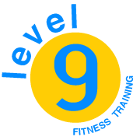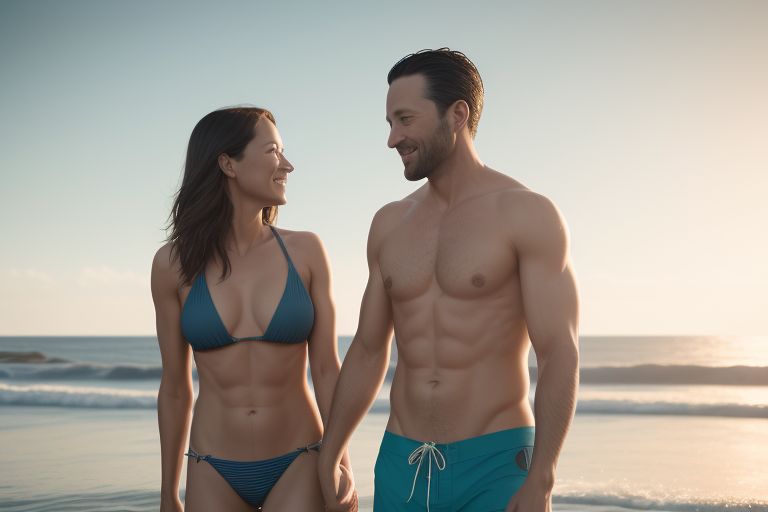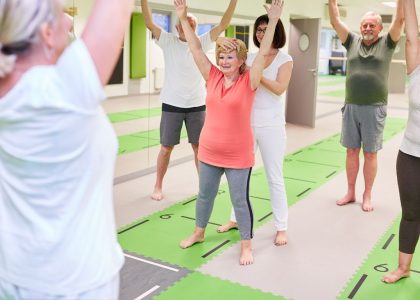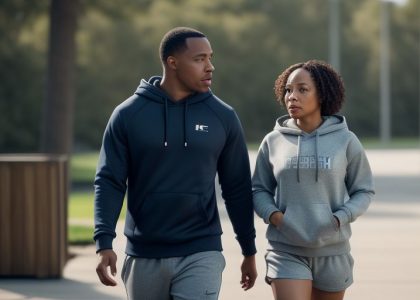Let’s face it- We want to look and feel our very best, especially when we’re on vacation. I preach pretty much every day about the personal training benefits for general health and fitness, and I often say being bathing suit ready is a happy side effect.
In my opinion rocking a bathing suit ready body is always secondary to overall good health. Jumping into a fitness training program with your primary goal of aesthetics can feel empty, frustrating and even hopeless at times. Trust me, I know this firsthand.
Benefits of Exercise & Good Nutrition
Training hard and eating clean at a high level of consistency can provide a bunch of incredible benefits including:
- extended life expectancy
- high energy levels
- staying cognitively sharp
- boosted immunity
- reduced risk of disease
- sense of well-being
- confidence
Consistent fitness training plus a clean diet allows us to offer the best version of ourselves to our loved ones, and to the world.
Getting Bathing Suit Ready
Looking “bathing suit ready” may be a secondary goal in your fitness journey, taking a back seat to general health. Nevertheless, this goal can inspire you to take your training up another notch. Fine tuning your physique can actually be a great motivator in the short term.
In this article I’ll be flipping the script by making getting bathing suit ready the primary goal. This guide is for males, females and everyone else wanting to feel comfortable and confident the next time you’ll be rocking your favorite bathing suit.
This article aims to guide you through the fine-tuning and final stages of getting prepared to rock your most revealing bathing suit body on your next vacation.
Getting “bathing suit ready” typically involves a combination of regular exercise, a balanced diet, and specific targeted workouts to tone certain areas like the abs.
I hope this bathing suit body guide helps you get ready for your next vacation!
Bathing Suit Ready Plan of Action
Set Clear Non-Negotiable Goals

Take the time to sit down and define exactly what you want to achieve in the next two months.
I’d suggest using the SMART goal setting concept (Specific, Measurable, Attainable, Relevant, Time-bound).
To get even more specific in your goal setting consider answering some very specific questions when setting your Bathing Suit Ready Goals:
- Why am I doing this?
- What lengths am I willing to go to in order to hit my goal?
- Who else will benefit when I’m successful?
- Who (if anyone) is joining me on this mission?
- Will I give 100% effort on this full plan?
- When is my deadline to be bathing suit ready?
- Am I willing to give up certain foods completely during this challenge?
- What if my plan gets interrupted?
- How will I feel when I’ve hit my goals?
- How will crushing this challenge affect those closest to me?
- Can I visualize my future self looking amazing, wearing my bathing suit on day one of my vacation?
- Who is my inspiration or example of how I will look when I meet my goals?
Exercise Routine
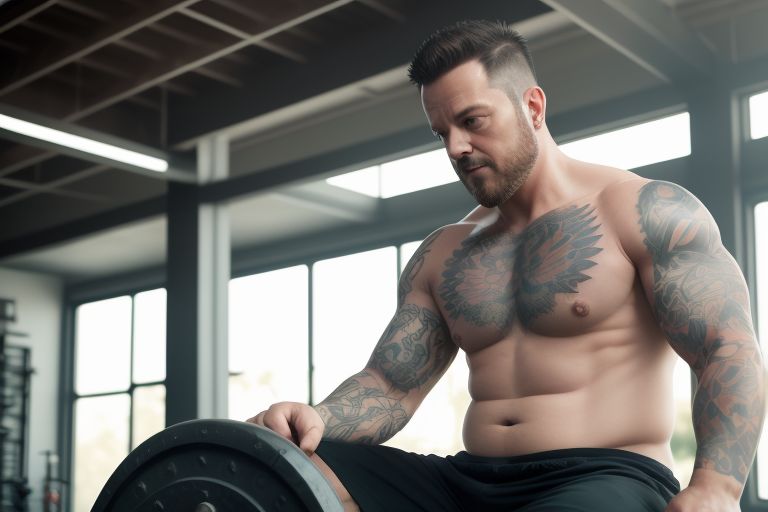
Strength Training:
Focus on compound exercises that work multiple muscle groups simultaneously. This will help you build muscle and burn more calories. Aim to do strength training exercises 3-4 times per week, targeting all major muscle groups.
Cardiovascular Exercise:
Incorporate cardio workouts such as running, cycling, swimming, or HIIT workouts (High-Intensity Interval Training). Aim for at least 3-4 sessions per week, with each session lasting 30-45 minutes. If you’ve got joint issues or injuries to work around I’d suggest sticking to elliptical machine workouts or walking.
Walking is actually some of the best overall cardiovascular exercise you can do. The major drawback to designating walking as your primary cardio workouts is the amount of time required to produce good results. Don’t get me wrong, any walking is great and you should always look for opportunities to increase your daily steps.
Ab Workouts:
Include specific exercises to target your abdominal muscles. The best tried-and-true ab and core workouts are:
- Planks: low plank, raised plank, side plank, side plank dips, frogger plank, etc.
- Crunches: standard crunch, cross crunch, ankle-to-knee cross crunch, knees down side crunch, etc.
- Sit-Ups: straight sit-ups, cross sit-ups, sit-up arms raise or shoulder press, etc.
- Leg Lifts: straight leg lifts, v-lifts, leg lift circles, etc.
- Boat Pose: static boat, Russian twists, bicycle boat, boat crunch, etc.
- Hanging Abs: hanging leg lift, hanging crunch, oblique twist, etc.
There are thousands of possible combinations of these exercises to put together incredible abs workouts. I often recommend adding a daily planking routine to any existing exercise program, regardless of your goals. These specific exercises aim to tone and tighten the abs more than grow them. Ab toning is the most common goal most people share. Building abs for size is something different, and not a very common goal for the masses. However, if building ‘block abs’ like a bodybuilder is your goal just add weight to every exercise listed above.
If you’ve already built a rock solid core, consider jumping into advanced abs workouts. Exercises such as the Copenhagen plank (pictured below) will allow you to incorporate more cardio and strength training into your most intense abs workouts.
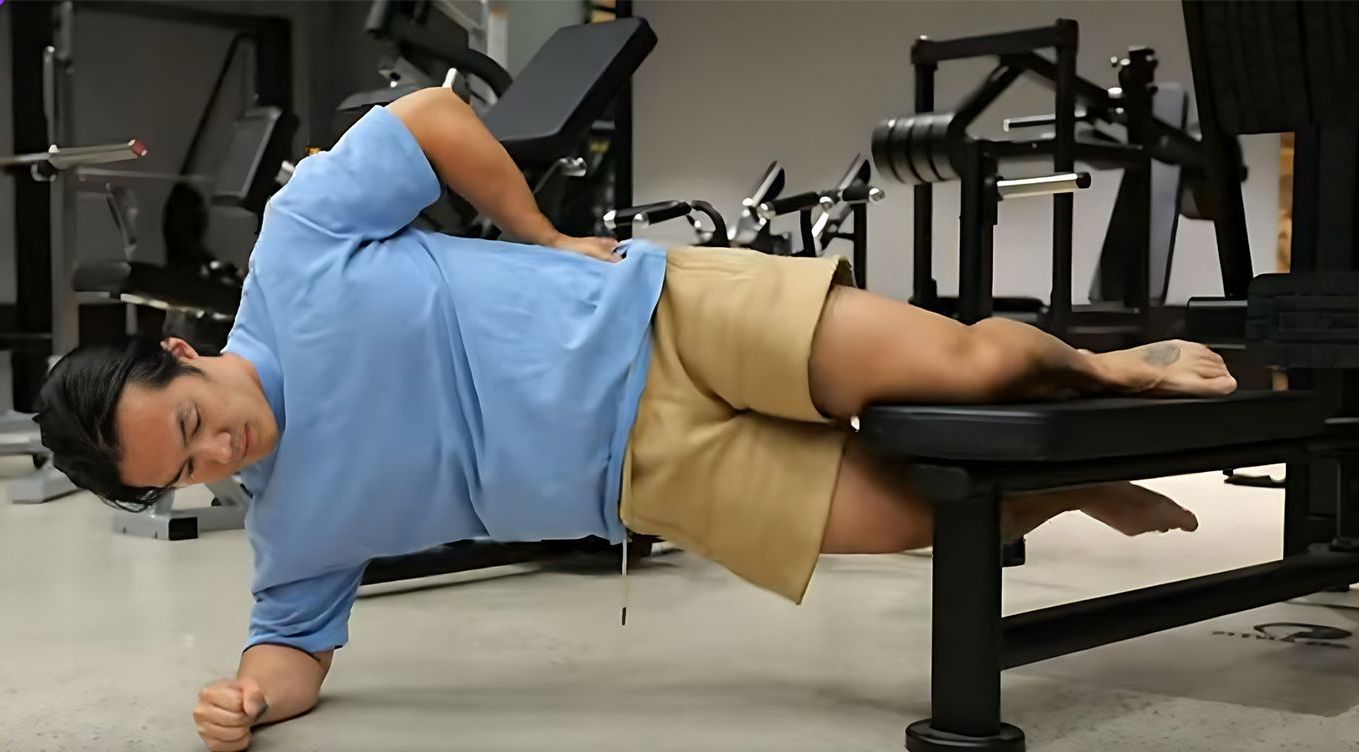
Aim to do ab workouts 3-6 times per week. Although ab workouts can make you super sore the abs are a sheet of muscle which is very resilient and can be trained every single day if you so desire. Just be mindful not to over do it. As you’ll discover later in this post, your choices in meal planning will play a bigger roll in getting six-pack abs than doing thousands of crunches daily.
Diet and Nutrition
There’s a saying dating back as far as I can remember, and I agree to a huge degree:
Abs are made in the kitchen
This is absolutely true, with actual abs workouts also being important. It’s important to keep in mind just how crucial a proper diet is in getting and staying lean enough to show off your six-pack abs.
When you’re thinking about finally buckling down and developing a set of washboard abs your first thought might be
“Okay, so I’ll be living in the gym for the next six months, training seven days a week, right?”
Nope, that’s not exactly the most important part of developing your six-pack. Sure, gym time is going to contribute greatly to building and toning your perfect abs, but your diet matters even more.
While shaping our midsection we also have to shift our thinking to more of an idea of uncovering your abdominal section. If you’ve been doing abs exercises and core training regularly but can’t see your abs don’t worry, they’re there, you just need to uncover them! A fitness app can play a huge role in building your six-pack abs. Many workout and nutrition apps are available to track calories and much more.
This uncovering process will be achieved by promoting consistent fat loss, specifically around the abdominals.
Losing Fat to Uncover Your Abs
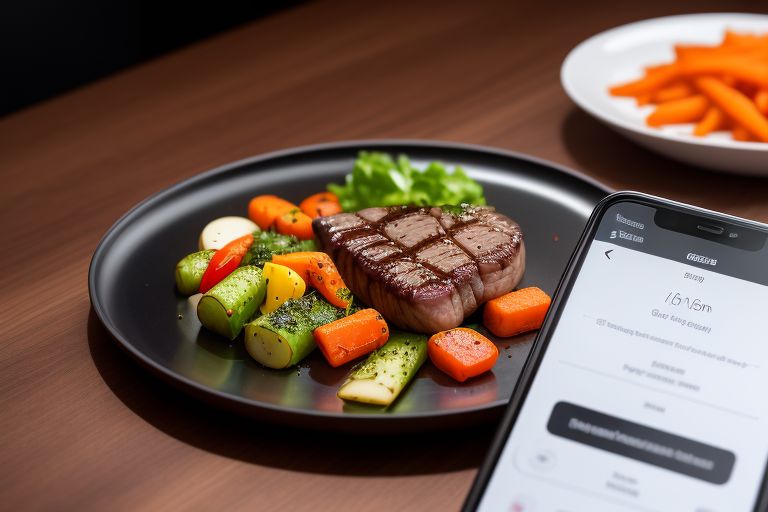
Caloric Deficit
To lose body fat and achieve a leaner physique, you’ll need to consume fewer calories than your body needs. Calculate your daily caloric needs and aim to create reach a deficit of 300-800 calories per day to lose about 1-3 pounds per week. Try reducing your caloric intake gradually.
Even if you’re an absolute beast in the gym, in order to lose weight you’ll still need to consume less calories than you burn each day
In your first week of try to reduce your daily calories by only 200. Then in the following week try a reduction of another 200 calories. In your third week try another 200 calorie reduction. If you’re still functioning well and thinking clearly at a caloric deficit of 600 you’re ready to drop your calories again, now at 100 to 200 per week until you’ve reached your limit. Stay mindful of your mood and concentration throughout the day.
Years ago, during a drastic fat loss program I actually put some strain on a relationship I was in at the time. While dieting didn’t exactly turn me into the incredible hulk it did make me irritable and easily annoyed. Plus my listening skills went from my baseline C+ to a solid F. Be smart, be safe, be mindful. You’ve been warned.
Balanced Diet
I always love retelling the story about the broccoli loving Weight Watchers member asking questions at her local meeting. Side note- I love Weight Watchers and have felt this way for years. They’re especially awesome now that they’ve updated their food charts and allowances.
Short version of the story: Right in the middle of a presentation by a guest speaker the nice lady raised her hand. She proceeded to ask-
“How many calories are in a cup of broccoli?” and the speaker replied “You’re not here from eating too much broccoli.”
The point being: Fill up on healthy foods, especially foods packed with vitamins and minerals. Eating clean most certainly doesn’t have to mean you’re walking around starving every day. You don’t have to be miserable to lose weight.
Focus on eating whole, nutrient-dense foods such as lean proteins, vegetables, fruits, whole grains, and healthy fats.
Minimize processed foods, sugary snacks, and high-calorie beverages.
Proper Hydration
Drink plenty of water throughout the day to stay hydrated and support your metabolism. Once you’ve determined how much water you need each day you can purchase a jug of that size. Or buy a jug half the size of your daily requirements and be sure to drink two full bottles daily. This is the most simple and clear-cut way to hit your water goals every single day.
Meal Timing
Consider spreading your calorie intake across smaller, more frequent meals to keep your energy levels steady and prevent overeating. The diet model recommending small meals and frequent grazing tends to work well and has been a go-to option for exercisers for many years. A separate approach which has been gaining popularity in recent years is intermittent fasting. The concept of fasting is actually thousands of years old, yet has seen a boom in pop-fitness for the last decade or so. We’ll explore fasting later in this article.
Rest and Recovery
Ensure you’re getting enough sleep each night, as sleep is crucial for muscle recovery and overall health. The importance of sleep for good health has never been more clear, thanks to countless studies and anecdotal evidence. Long gone are the days of the power player claiming he functions best on three hours of sleep each night, except for Jocko Willink, who’s clearly an anomaly.
Give your body a chance to repair and recover from your tough workouts. Incorporate rest days into your workout routine to allow your muscles to recover and prevent overtraining. A bare minimum amount of weekly rest days is one. On a full rest day I’d still recommend a light yoga session or stretching, but no cardio or strength training.
Consistency and Patience
Stay consistent with your exercise routine and dietary habits. Results won’t happen overnight, but with dedication and persistence, you’ll see progress over time.
Be patient and realistic with your goals. It’s important to stay on course no matter what. Sometimes results don’t come as fast as we want but that’s never a reason to quit. I’ve had my share of setbacks and plateaus throughout my years of fitness training. Along the way I’ve learned to remain patient and knowing I’m doing the best I can helps me sleep well at night.
Slow is smooth and smooth is fast —US Navy SEALS
Aim for gradual, sustainable progress rather than quick fixes or extreme measures. Stay committed to your program and proud of what you’ve accomplished so far. Although we have a finite goal here we should still remember the journey is the destination. Try to enjoy the process (even burpees, if that’s possible).
Monitor Progress
Track your workouts, measurements, and progress regularly to see how you’re progressing toward your goals. Adjust your plan as needed based on your results and how you’re feeling.
Remember, getting “bathing suit ready” is not just about physical appearance but also about feeling confident and healthy in your own skin. Focus on making sustainable lifestyle changes that you can maintain long-term for lasting results.
Special Dieting Tips to Get Bathing Suit Ready
OPTION A: Grazing Diet
Breakfast
Start your day with a balanced breakfast containing protein, healthy fats, and fiber to kickstart your metabolism and provide sustained energy throughout the morning.
Pre-Workout
Eat a small meal or snack containing carbohydrates and protein about 1-2 hours before your workout to fuel your exercise session and maximize performance.
Post-Workout
Consume a meal or snack containing both carbohydrates and protein within 30 minutes to an hour after your workout to support muscle recovery and replenish glycogen stores.
Evening Meal
Try to have your largest meal of the day earlier in the evening rather than late at night. This allows your body more time to digest before bedtime and may help with weight management.
OPTION B: Intermittent Fasting to Boost Fat Loss
Intermittent fasting (IF) can be an effective approach for some individuals to manage their weight and improve overall health. However, whether it’s suitable for you depends on various factors including your lifestyle, preferences, and medical history.
Based on my own fasting experiences, as well as feedback from clients, I love IF not only as a way to cut fat but also a sustainable diet model long term. As I mentioned earlier IF isn’t the right fit for everyone, but it’s definitely worth a try. If you’re new to fasting give it a fair shake of one full month is possible. A month is plenty of time to let your body safely adapt.
Intermittent Fasting Methods
Intermittent fasting involves cycling between periods of eating and fasting. When IF is done correctly, only allows for water, coffee, tea, with nothing added.
In recent years there has been much discourse about adding drinks and even some foods during fasting. Just check out the intermittent fasting Subreddit to see the latest developments on this ongoing debate. It stands to reason that consuming any calories during ‘fasting’ is actually simply called dieting.
Popular Fasting Methods:
- 16/8 method – fasting for 16 hours and eating within an 8-hour window
- 18/6 method – fasting for 18 hours and eating within a 6-hour window
- 20/4 method – fasting for 20 hours and eating within a 4-hour window
- OMAD – One meal a day
- Extended Fast – 24 hours or more. Safe duration can vary greatly from person to person.
- 5:2 method – eating normally for five days and restricting calories on two non-consecutive days
Intermittent fasting can be effective for weight loss and may have other health benefits, but it’s important to listen to your doctor and your body and choose a diet model that works best for you.
Here are some points to consider:
Weight Loss
Intermittent fasting can help create a caloric deficit, which is essential for weight loss. By restricting the timing of your meals, you may naturally consume fewer calories, leading to weight loss over time.
Metabolic Health
Some research suggests that intermittent fasting may improve metabolic health markers such as insulin sensitivity, blood sugar levels, and cholesterol levels. However, more studies are needed to fully understand its long-term effects on metabolic health.
Convenience
Intermittent fasting can be convenient for some people, as it simplifies meal planning and may eliminate the need for frequent snacking throughout the day.
Individual Variability
Intermittent fasting may not be suitable for everyone. Some people may experience negative side effects such as hunger, fatigue, irritability, or difficulty concentrating while fasting. It’s essential to listen to your body and adjust your approach accordingly.
Regarding an extended fast before your vacation, such as a water fast or a prolonged period of fasting, it’s essential to approach it with caution. Extended fasting can lead to nutrient deficiencies, dehydration, muscle loss, and other adverse effects, especially if not done under proper supervision or if you have underlying health conditions.
If you’re considering an extended fast, it’s crucial to consult with a healthcare professional, such as a registered dietitian or a doctor, to ensure it’s safe for you and to receive personalized guidance. Additionally, fasting right before your vacation may not be the best approach, as it could potentially impact your energy levels and enjoyment during your trip.
Instead of focusing on extreme measures like extended fasting, consider adopting a balanced approach to nutrition and exercise that you can maintain long-term. Consistency and sustainability are key factors in achieving and maintaining your desired physique.
Portion Control
Pay attention to portion sizes and avoid oversized servings, especially of high-calorie foods.
Consider using smaller plates and bowls to help control portion sizes visually.
Mindful Eating
Practice mindful eating by paying attention to hunger and fullness cues, eating slowly, and savoring each bite.
Avoid distractions while eating, such as watching TV or scrolling through your phone, as this can lead to overeating.
Hydration
Drink plenty of water while fasting. Stay well hydrated throughout the day to help control hunger and boost the benefits of autophagy. Sometimes thirst can be mistaken for hunger, so staying hydrated may help prevent overeating.
Healthy Snacking
Choose nutrient-dense snacks such as fruits, vegetables, nuts, and yogurt to keep hunger at bay between meals.
Be mindful of portion sizes when snacking, and avoid mindlessly reaching for unhealthy snacks out of boredom or stress.
Limit Sugary and Processed Foods
Minimize your intake of sugary snacks, desserts, and processed foods, as these tend to be high in calories and low in nutrients.
Opt for whole, unprocessed foods whenever possible to support overall health and weight management.
Incorporating these dieting tips alongside your exercise routine can help optimize your efforts to get “bathing suit ready” within two months.
Remember to listen to your body and make adjustments as needed to find what works best for you.
Add Meal Replacement Shakes to Lose Weight
There are many meal replacement shakes available on the market, but it’s essential to choose one that fits your nutritional needs and preferences. Here are some factors to consider when selecting a meal replacement shake:
Nutritional Content
Look for a meal replacement shake that provides a balance of macronutrients (protein, carbohydrates, and fats) as well as essential vitamins and minerals. Ideally, it should offer a sufficient amount of protein to help you feel full and support muscle maintenance or growth.
Caloric Content
Consider the caloric content of the shake and how it fits into your overall calorie intake for the day. Some meal replacement shakes are designed for weight loss and may be lower in calories, while others are more suitable for meal supplementation or weight maintenance.
Ingredients
Read the ingredient list carefully and choose a shake made with high-quality, whole food ingredients. Avoid shakes with added sugars, artificial flavors, and preservatives.
Taste and Texture
Select a meal replacement shake that you enjoy drinking, as this will increase the likelihood that you’ll stick to using it regularly. Many brands offer a variety of flavors to choose from, so you can find one that suits your taste preferences.
Allergens and Dietary Restrictions
If you have food allergies or follow a specific dietary pattern (e.g., vegan, gluten-free), make sure to check the label for potential allergens or ingredients that may not align with your dietary needs.
Best Meal Replacement Shake Options
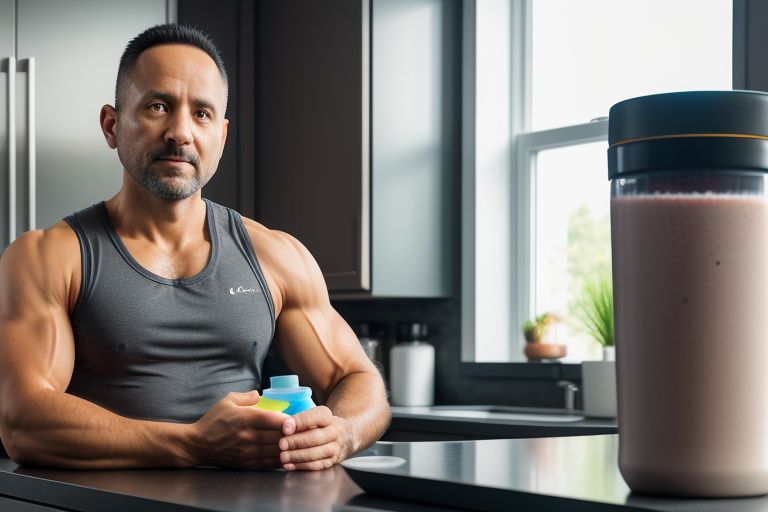
Below you’ll find a basic list of the best meal replacement shakes. You should have an easy time finding any of these quality products on Amazon.
Orgain Organic Protein
Orgain offers a range of organic, plant-based protein shakes that are low in sugar and rich in vitamins and minerals.
Ensure Original Nutrition Shake
Ensure Original provides a convenient and balanced option for meal replacement, with a blend of protein, carbohydrates, and essential nutrients.
Huel
Huel offers nutritionally complete meal replacement shakes made from sustainable ingredients, including a balanced blend of protein, carbohydrates, fats, fiber, vitamins, and minerals.
Vega One All-In-One Shake
Vega One is a plant-based meal replacement shake that provides protein, greens, vitamins, minerals, and fiber. It’s available in various flavors and is free from dairy, gluten, and soy.
Before incorporating meal replacement shakes into your diet, it’s a good idea to consult with a healthcare professional or registered dietitian to ensure they align with your nutritional needs and goals. Additionally, meal replacement shakes should complement a balanced diet rather than replace whole foods entirely.
Supplements to Aid in Getting Bathing Suit Ready

Supplements can play a role in fine-tuning your physique, especially when you’re prepping for a vacation. If you have deficiencies you’ll definitely want to supplement your diet in order to get your levels into normal range. If you’re not sure you can ask your doctor for a blood test and go from there.
Assuming you’ve got that taken care of let’s look at supplements that might help you achieve your bathing suit ready body.
Fat Burner Pills
Most of these are useless. If you insist on taking a fat burner look for one that includes some combination of at least two of these: caffeine, yohimbine, l-carnitine, l-theanine, cayenne pepper, and green tea leaf extract. Even if a supplement contains two or more of these it might not do much for your bathing suit ready goals. Check reviews before picking your fat burner.
Caffeine
As you’re probably well aware, caffeine can work well as an appetite suppressant. I also use caffeine, specifically black coffee, as a pre-workout supplement. I’ve tried many of the pre-workout supplements on the market and still prefer a strong cup of coffee before almost every resistance training and HIIT workout I do.
Green Tea
Tried and true, green tea can raise your metabolism. Although green tea (and extracts) only have a slight impact as a metabolism booster, it could be a part of your bathing suit ready prep. Similar to coffee, green tea can also work as an appetite suppressant.
Creatine
This well studied supplement can actually cause you to go the wrong way on the scale. So if weight loss is your primary focus you might think twice before taking creatine. In terms of strictly weight loss it won’t help. On the other hand, creatine can help you build muscle, and look more ripped in your bathing suit. You might experience some bloating so make sure you go through the creatine loading phase at least a few weeks before your vacation starts. Creatine is also a nootropic, meaning it could help you outside of the gym too!
Apple Cider Vinegar
Studies don’t do much for backing up apple cider vinegar as a fat burner, but it can make you feel more full. So indirectly it can help you lose weight. ACV is trending right now for weight loss and general health. The apple cider vinegar health benefits are well worth the gross taste.
Conclusion
You’re well on your way to hitting your vacation body goals! You are already many steps ahead of the average person who does not follow a plan of action to achieve their bathing suit goals. Over the years I’ve had the opportunity to ask many people what they normally do to prepare for a vacation. The most common response is they simply cut carbs. When I ask how much they’ll usually reply with a general answer such as “A bunch” or “All” but they’re winging it. With this guide you’re greatly increasing your likelihood for success. Good Luck!
This article is for information and entertainment purposes only. Consult your healthcare professional when making changes to your diet and exercise program.

